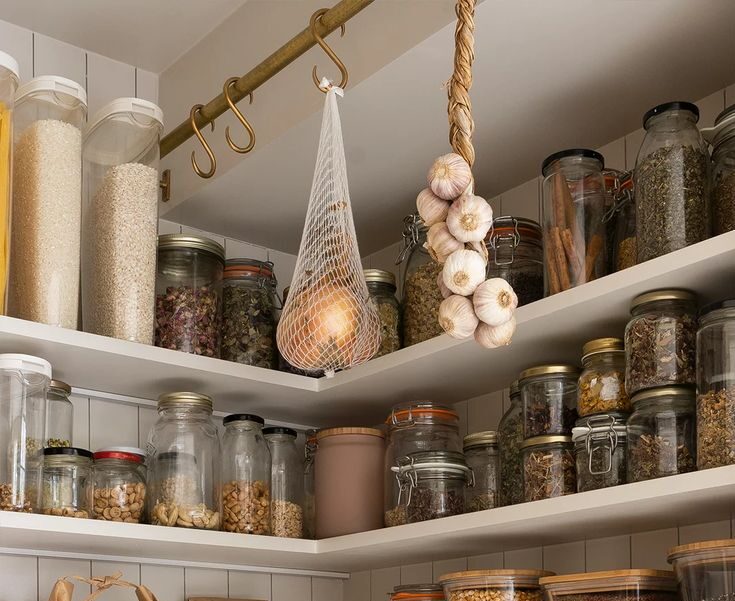One of the biggest struggles when starting university and becoming an adult is the ongoing challenge to produce tasty, healthy, and cost-effective meals. This becomes even more daunting when the amount of unrealised effort and thought that goes into cooking makes itself apparent. However, the alternative of the world of takeout food – often smothered in butter and oil – can eat up a week’s food budget in one mediocre meal. As a chef, often my most important ingredients are those which can be found in my cupboard. I call these “Pantry Saviours”, simple ingredients that can be added at varying points in the cooking process to liven up the dish, add flavour, and zest. Moreso, they are a cost-effective way to play around with flavours and discover which foods you enjoy the most.
The first group of produce which should always be stocked in your cupboard is what I call the Flavour Base – made up of onions, garlic, chilli and ginger.
These simple ingredients can be used in a variety of ways and are important as they add layers of flavour to a simple dish.
When used correctly, the combination of even two of these ingredients (such as onion and garlic) will enhance the other notes of the meal. Both ingredients should be cooked low and slow to draw those flavours out gently – if they are added last and fast, the dish will be overwhelmed with a pungent and raw onion or garlic taste. I also recommend using shallots, a smaller type of onion with a delicate and lighter aroma that lacks the conventional tanginess of normal onions. Chilli and ginger can be used sparingly as they have a more intense effect, but they are useful to keep in your cupboard because they form the basis for many dishes from Asian cuisines such as noodles, curries or soups. Pro tip: opt for dried chilli flakes instead of fresh, and grate or finely chop ginger before adding them to your dish.
It’s important to think of each stage of cooking when preparing a meal or shopping for its ingredients. The only issue is that this takes time and effort, which students don’t often have at the end of a long day of lectures. Pantry Saviours help in this regard by simplifying the cooking process. The next group of ingredients which should be kept stock of in your cupboard is spices, sauces and pastes – what I refer to as “Flavour Bombs.” These are ingredients whose flavour will predominantly shine in the finished dish and are an excellent opportunity to get to know what flavour profiles you enjoy the most. Examples of these ingredients are spices such as coriander, sauces like soy and rice wine vinegar, and Gochujang or Harissa paste. They can be used at varying stages of cooking – I use Gochujang and soy sauce to marinate chicken and salmon, which results in a softer protein with an infused flavour. I suggest trying different cuisines when shopping for these pantry staples – for example, a Mediterranean inspired profile would involve ingredients such as creamy tahini, Za’atar and Duqqa spices, and dried herbs like sage and coriander.
Lastly, the finishing of the dish is just as important as the beginning. It not only rounds off a good meal, but can save a bland one. Here I suggest three premade types of ingredients: infused oils, pickled vegetables and fresh herbs. Infused oils differ from the oils used during cooking in that they are usually higher quality oils and filled with infusions such as whole chillies, herbs such as rosemary, and garlic. Their purpose is to lightly drizzle the infused oil over your finished dish for a hit of flavour and the added softness of texture. Pickled vegetables are an easy and quick method to add more healthy components to your meal, but the tangy, vinegar taste can cut through very creamy and soft foods for more balance. My personal favourite is Jalapeño Atchar, a pickled chilli in a spice blend. Finally, although not a strictly “pantry” item, roughly chopped herbs add a wonderful freshness to a meal. I love thinly sliced spring onions, as well as coriander for a more robust and rustic flavour. Fresh herbs should always be added to food when the cooking is almost finished or off the heat, to avoid the risk of mushy leaves.
Having to produce meals every day can be overwhelming, especially when trying to eat a balanced diet. When starting university and having to balance a demanding academic calendar, socialising with friends and looking after yourself, the priority of eating fresh and healthy foods can begin to slip.
“By keeping your pantry stocked with important ingredients such as onions, garlic, gochujang and various spices, your weekly grocery shopping is reduced to simply picking up proteins and fresh produce for the week”
Following this, Pantry Saviours can be added in many different ways to liven up the dish and make sure that not only are you eating a balanced plate, but enjoying it as well. The purpose of keeping your pantry stocked with these groups of ingredients is therefore, to cook in a time-efficient and cost-effective manner, but also to encourage cooking with creativity and intention – what flavour profiles are you drawn to? What specific ingredients do you enjoy the most?






